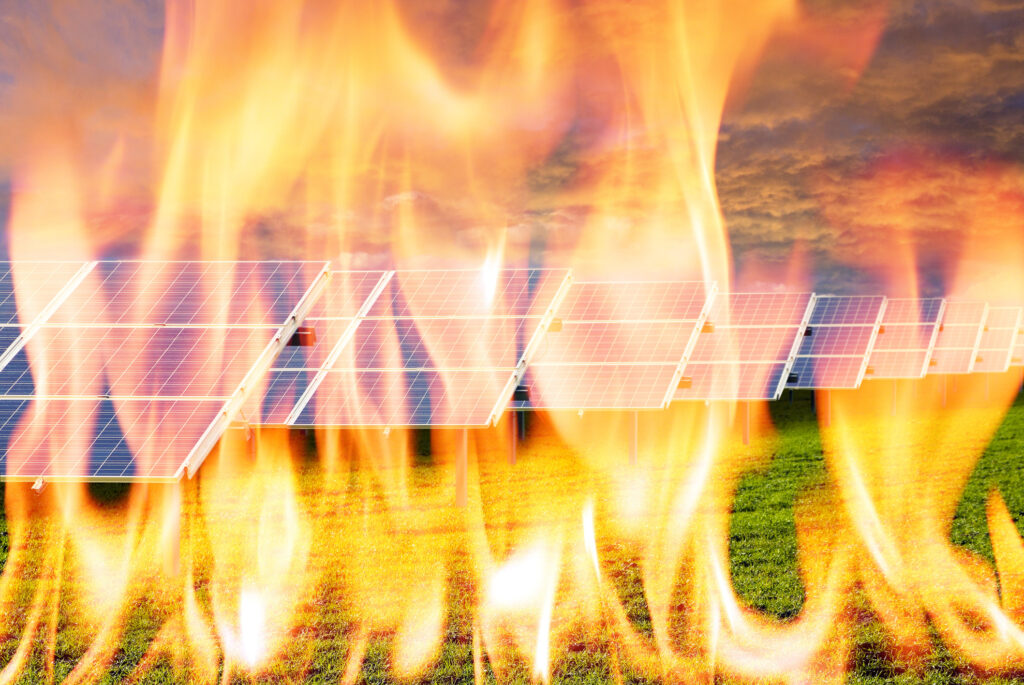
Solar farms, now accounting for almost two-thirds of newly installed electricity generation capacity in the U.S., face critical operational risks as wildfire seasons intensify, with studies showing nearly 7.7% reduction in solar generation during peak fire periods, according to a report from Gallagher.
The transition to renewable energy has positioned solar farms as a cornerstone of sustainable power generation in the United States. However, this growth faces significant obstacles as climate change intensifies wildfire seasons across the country, the report says.
The California Independent System Operator (CAISO), America’s largest solar power producer, experienced diminished energy production last year compared to August 2023, highlighting the vulnerability of solar infrastructure.
The impact extends beyond immediate generation capacity. Wildfires reduce solar radiation not only near their source but at considerable distances downwind, Gallagher explains. This widespread effect has implications for grid stability and resource planning, particularly in states heavily invested in solar infrastructure.
The financial implications are equally concerning. Beyond reduced generation, wildfires increase reserve requirements by raising the possibility of insurance claims from damaged infrastructure. For solar farm operators and investors, these emerging risks threaten both short-term revenue and long-term project viability, Gallagher noted.
Dual Threats to Solar Farm Operations
Solar energy systems face both external and internal fire hazards. External wildfires present multiple threats, including direct damage to photovoltaic panels and supporting electrical systems. The intense heat from approaching fires causes thermal stress to critical components like wiring and inverters, potentially rendering entire systems inoperable even without direct flame contact.
Performance degradation represents another significant challenge. Smoke and airborne debris dramatically reduce energy production efficiency by blocking sunlight from reaching panels. Following fires, ash and soot accumulation on panel surfaces leads to overheating issues and can cause lasting damage if not promptly addressed.
Equally concerning are the on-site conditions that can trigger internal fires. Conventional solar farm management practices sometimes inadvertently increase fire risk. For instance, grazing sheep—commonly employed for vegetation control—often leave behind dry grass patches highly susceptible to ignition. Similarly, accumulated grass clippings on gravel roads, intended to serve as firebreaks, can become fuel sources themselves without proper maintenance. These internal vulnerabilities compound the external threats, creating a complex risk landscape for operators.
Strategic Approaches to Wildfire Risk Mitigation
Effective vegetation management stands as the first line of defense against wildfire threats. Regular mowing and clearing around solar arrays prevent fire spread, while meticulous firebreak maintenance ensures gravel roads remain free of flammable debris. When employing sheep for grazing, operators should implement mechanical clearing of dry grass and animal waste from underneath panels to eliminate hidden fuel sources.
Infrastructure design choices significantly impact wildfire resilience. Forward-thinking solar developers are increasingly incorporating non-combustible mounting structures and enclosures, secured and properly insulated cabling, and fire-resistant coatings on critical components. These preventative measures substantially reduce vulnerability to both external and internal fire events.
Routine maintenance protocols represent another crucial defense layer. Advanced monitoring solutions like thermal scanning robots equipped with infrared cameras continuously search for dangerous hot spots before they escalate into fires. Regular inspection for panel microcracks is equally important, as rising temperatures can cause these flaws to expand and disrupt electrical flow, potentially creating ignition points.
Early detection systems provide critical response time when prevention fails. Strategically positioned thermal imaging sensors can identify heat buildup before visible flames appear. Drone monitoring with thermal cameras offers rapid assessment capabilities across expansive solar installations, while innovative containment methods like strategic sandbag placement along perimeters can prevent fire spread.
Obtain the full report here.
